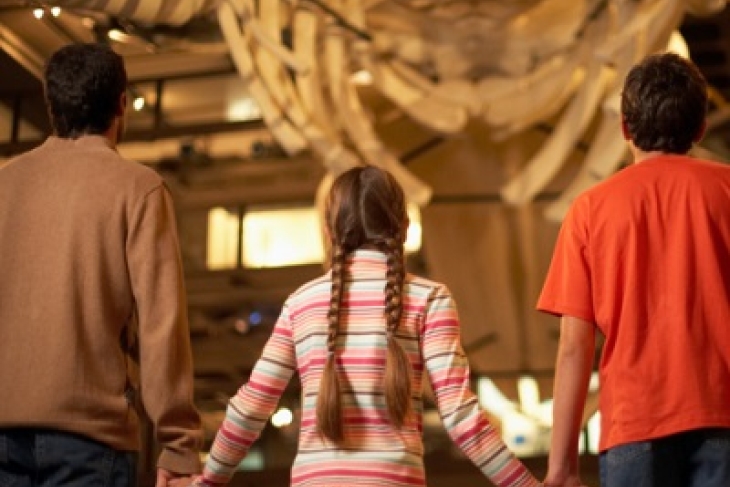In a perfect world, all children would have access to an inspiring, well-rounded education, especially in pre-K and elementary school. They need a solid grounding in history, science, art, music, and literature. This is the period when their minds, like little sponges, are most receptive to learning about faraway times and places, hearing the classic stories from cultures around the world, understanding how the universe works, and unleashing their mini-Picassos and Beethovens. Plus, cognitive science tells us, these “extras” help our kiddos become excellent readers to boot—setting them up for a successful academic career from pre-K to college. (That’s because, along with learning to decode the English language, their reading ability is mostly determined by their store of vocabulary and content knowledge.)
Unfortunately, the vast majority of American elementary schools continue to eschew the type of well-rounded education that builds children’s knowledge. They see such an education as prioritizing “mere facts” at the expense of play, “natural learning,” or social and emotional development. That’s wrongheaded thinking. Studying topics like ancient Egypt, the constellations, or Greek myths provides ample opportunity for lessons on feelings, fun, play, and the ethical treatment of others. Lessons in these areas never have to consist only of reading chapters from a textbook, and they seldom have to focus on just one subject.
If you don’t know history…
Perhaps most tragically, many elementary schools claim not to have time for history, science, and the arts because they are too busy teaching reading. The latest data collected by the National Survey of Science and Math Education (a project funded by the National Science Foundation) indicate that just sixteen minutes per day in the typical K–3 classroom are dedicated to social studies, with just nineteen minutes earmarked for science. It’s hardly any better in grades 4–6, where the subjects together get forty-five minutes per day on average.
That tracks what I’ve seen in my son’s classrooms in the vaunted Montgomery County Public Schools in Maryland (near Washington, D.C.). Even under pressure from the Washington Post, district officials refuse to budge. “Teachers say there is too much content to cover” already, a spokesman told veteran education columnist Jay Mathews. “We should listen to them, and we do.”
Take matters into your own hands
So what’s a mom or dad to do? Take a page from home-schoolers and DIYers. Here are some concrete ideas for exposing your kids to history, science, art, music, and literature at nights, on the weekends, and during the summer. (Disclaimer: This isn’t new and groundbreaking; it probably matches what you’re doing already.)
- Go visit a museum or see a show. I’m lucky to live near Washington, which has an embarrassment of (mostly free) riches in the cultural opportunities department. Still, every big city and many small ones boast zoos, science centers, art museums, orchestras, and musical theaters—if not all, then some. Take advantage of them. Such field trips are not only fun—kids learn a lot from them.
- Read, baby, read! You’re already reading to your kids at night, and there’s no harm in choosing books that are fun and goofy. But why not include classic literature, as well as history and science, in their diet? For the little ones, this Kindergarten Canon might be helpful. As children get older, Junior Great Books is a fantastic resource. And thanks to the Common Core State Standards, there’s more children’s nonfiction than ever. My son loves Nathan Hale’s Hazardous Tales, which serves up adventures from U.S. history in graphic novel form. (There’s even a children’s book on the Donner Party. Delicious!) The “Who Was?” series is decent, too. And the Magic Tree House series does a reasonable job presenting lots of historical and literary references, even if they will make you want to poke your eyes out.
- Don’t forget children’s magazines. I remember enjoying Highlights and Ranger Rick as a kid, but I’ve really come to treasure Cricket and its cousins as an adult. They aspire to be “the New Yorker for children,” and in my view, they succeed. My eight-year-old loves Spider and Ask—the former focuses on stories and the latter on arts and sciences. Both strike a nice balance between high-brow content and kid-friendly fun.
- Turn TV time into learning time. I have little doubt that my kids have gained more knowledge from PBS Kids than from their schools. Especially when it comes to science, there’s a lot of great content available on television and online. Through free sites or with subscriptions to streaming video services such as Netflix, you can access children’s shows like Wild Kratts, Sid the Science Kid, Magic School Bus, and Dinosaur Train—plus nature shows on the Discovery Channel and National Geographic Channel. I’ve organized the best shows I’ve found online by subject matter here.
- There’s an app for that. If you’re not allergic to a little screen time, educational apps can boost your kids’ knowledge. Here are a bunch that teach real content rather than just reading or math skills.
What tips do you have to help your kids build their knowledge—and still have fun?
For sure, it’s crazy that we public school parents have to supplement our kids’ classrooms when it comes to basic subjects such as history and science. We should all pressure our school boards to bring back a well-rounded curriculum in the early grades, especially since not all kids are lucky enough to get supplemental instruction at home. In the meantime, though, teach them yourself. It’s a whole lot of fun—and you will surely learn a bunch (about the world, yourself, and your kids) along the way.
Editor's note: This post originally appeared in a slightly different form at GreatKids.

